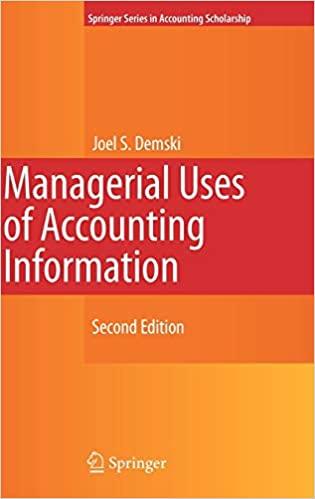10. classical analysis Ralphs firm consists of divisions A and B. All of the output of A...
Question:
10. classical analysis Ralph’s firm consists of divisions A and B. All of the output of A is transferred to B, where it is processed further and then sold. No costs are incurred at center. The outputs are coordinated, implying qA = qB. The market price for the finished product is presently 450 per unit; and the division’s short-run cost structures are as follows:
CSR A (qA; P) = 200 + 450qA − 10q2A
+ (1/6)q3A CSR B (qB; P) = 300 + 250qB − 10q2B
+ (1/6)q3B
(a) Determine the firm’s optimal output and corresponding profit.
(b) Suppose B can order any quantity from A, and will be charged a transfer price of T per unit. A is obliged to produce as instructed.
Find a T such that maximizing its division income will lead B to prefer the output quantity you determined in (a)
above.
(c) Suppose A can manufacture any quantity it desires and will be credited with an internal revenue of T for each unit. Find a T such that maximizing its division income will lead A to prefer the output quantity you determined in
(b) above.
(d) As a serious lesson in the art of coordination, we appear to be making a mistake here. What is our mistake?
Step by Step Answer:






